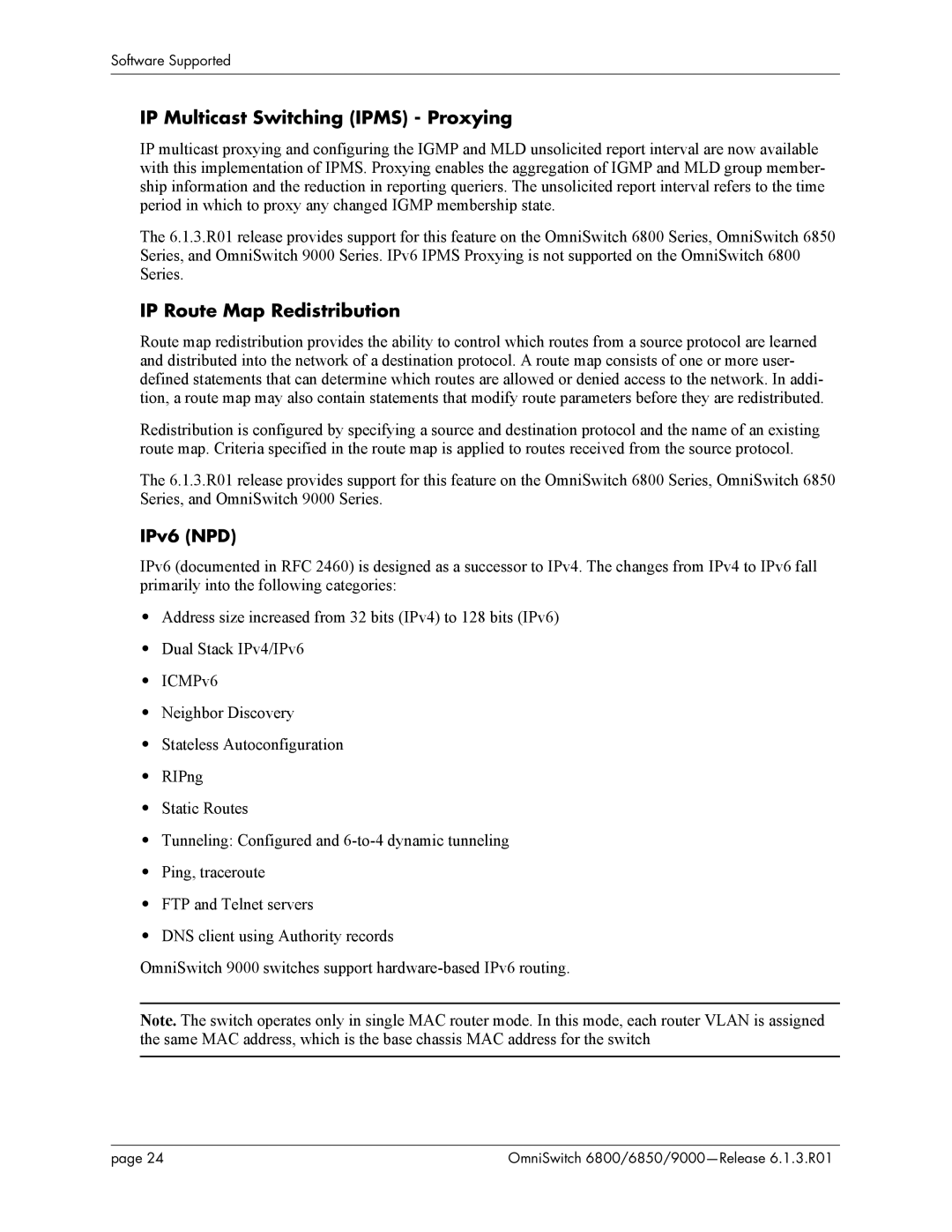
Software Supported
IP Multicast Switching (IPMS) - Proxying
IP multicast proxying and configuring the IGMP and MLD unsolicited report interval are now available with this implementation of IPMS. Proxying enables the aggregation of IGMP and MLD group member- ship information and the reduction in reporting queriers. The unsolicited report interval refers to the time period in which to proxy any changed IGMP membership state.
The 6.1.3.R01 release provides support for this feature on the OmniSwitch 6800 Series, OmniSwitch 6850 Series, and OmniSwitch 9000 Series. IPv6 IPMS Proxying is not supported on the OmniSwitch 6800 Series.
IP Route Map Redistribution
Route map redistribution provides the ability to control which routes from a source protocol are learned and distributed into the network of a destination protocol. A route map consists of one or more user- defined statements that can determine which routes are allowed or denied access to the network. In addi- tion, a route map may also contain statements that modify route parameters before they are redistributed.
Redistribution is configured by specifying a source and destination protocol and the name of an existing route map. Criteria specified in the route map is applied to routes received from the source protocol.
The 6.1.3.R01 release provides support for this feature on the OmniSwitch 6800 Series, OmniSwitch 6850 Series, and OmniSwitch 9000 Series.
IPv6 (NPD)
IPv6 (documented in RFC 2460) is designed as a successor to IPv4. The changes from IPv4 to IPv6 fall primarily into the following categories:
•Address size increased from 32 bits (IPv4) to 128 bits (IPv6)
•Dual Stack IPv4/IPv6
•ICMPv6
•Neighbor Discovery
•Stateless Autoconfiguration
•RIPng
•Static Routes
•Tunneling: Configured and
•Ping, traceroute
•FTP and Telnet servers
•DNS client using Authority records
OmniSwitch 9000 switches support
Note. The switch operates only in single MAC router mode. In this mode, each router VLAN is assigned the same MAC address, which is the base chassis MAC address for the switch
page 24 | OmniSwitch |
